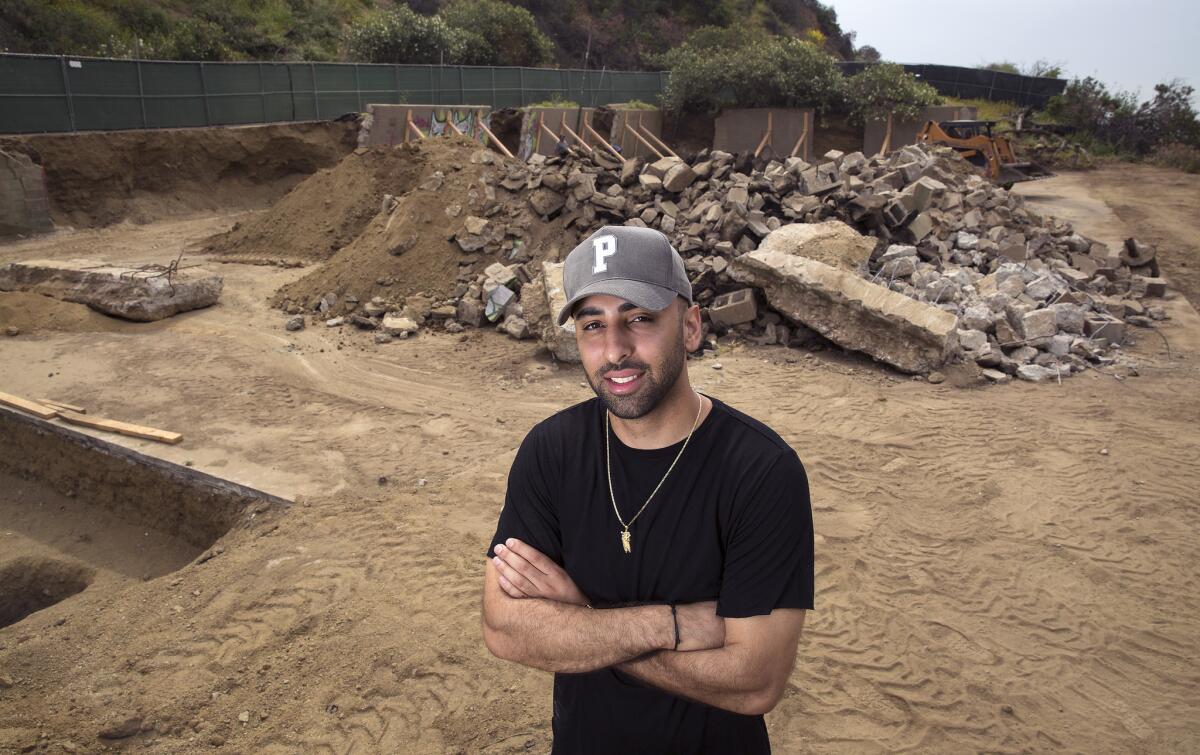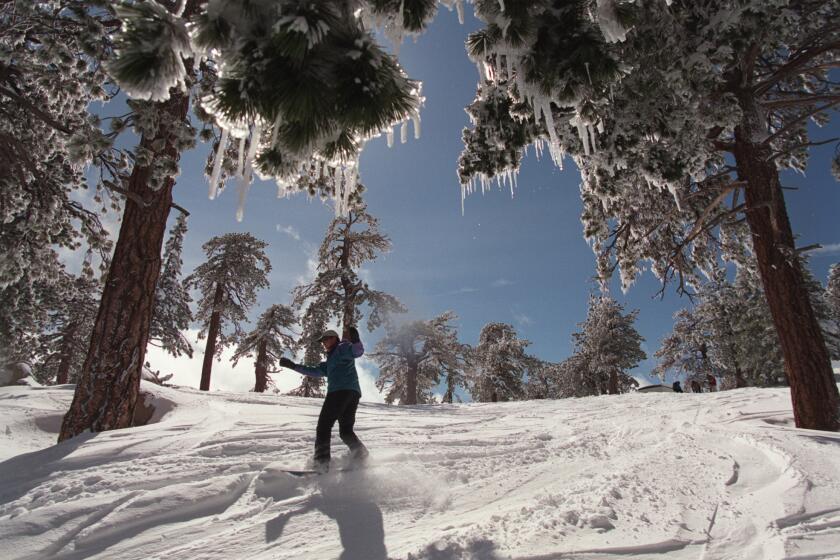A basketball court in Runyon Canyon probably won’t be built, but it will still cost L.A. $210,000

In November, Los Angeles gave the OK for a private donor to build a badly needed retaining wall in Runyon Canyon Park, along with a basketball court that would bear his company’s logo.
On Wednesday — in the wake of a public outcry, as well as a lawsuit from a group of neighbors of the very popular, very heavily used open space — the city is expected to rescind its approval.
That the Board of Recreation and Parks commissioners will vote to do so seems all but certain, given that the department, the councilman whose district includes the park and the Friends of Runyon Canyon, a nonprofit that initially supported the project, now are against it.
A reversal, however, will come at a high cost: somewhere around $210,000, according to Councilman David Ryu. That’s how much the city will have to pay back to Neima Khaila, chief executive of Pink Dolphin, a limited-edition street-wear company, if it breaks its agreement.
Khaila will need to present receipts, but Ryu said that much probably has been spent because the retaining wall — whose costs represented the bulk of the $260,000 planned donation — is all but completed.
See the most-read stories this hour >>
Most park users learned about the project at the end of March, just as the park was being shut down to repair the aging water pipes that snake under its trails. They had gotten plenty of warning about the four-month closure, but did not know that a retaining wall and basketball court were to be built at the same time.
Opponents showed up in force at a neighborhood council meeting and inundated Ryu’s office with calls. They complained about a lack of community outreach and discussion, and said that proper procedures were not followed.
The retaining wall is partway up a trail. Some said that a basketball court — which was to be built just beneath it, on the concrete slab of a former tennis court — was inappropriate for what they called an urban wilderness.
Whether Runyon Canyon fairly can be called a wilderness these days is perhaps subject to debate.
An estimated 1.8 million people visit the 136-acre park every year. They come from all over for the steep hikes, the great views of downtown and the Hollywood sign, and the fact that dogs can wander much of the area off leash.
But what seemed to bother many of the basketball court’s harshest critics was the corporate logo, which the commissioners had approved as in keeping with the policies of the Recreation and Parks Department’s partnership division.
Formed five years ago, the division is charged with drumming up donations. The department is cash-strapped and struggles to pay for even the most basic park maintenance at a time when many say the city’s parks are being loved to death.
There is some irony then in the fact that Los Angeles now probably will have to foot the bill for a maintenance project it hadn’t been able to budget before the donation came in.
Ryu said the cost of the retaining wall probably would be covered through a combination of discretionary funds from his council office and Quimby fees, paid by developers to acquire or improve parks or recreational facilities. That will mean less money is available for other needed park work, he said. And what happened at Runyon, he said, might scare off other donors who want to help city parks.
Still, Ryu said, he came to the conclusion that the project needed to be halted after determining that there had been shortcomings in the vetting process.
“I ran on a platform of rebuilding trust in government, and a huge component of that is community involvement. Clearly in this case that was kind of lacking,” he said.
Ryu tried to put a positive spin on the reversal, characterizing it as a victory for faith in the government process. “Mistakes, they can be fixed,” he said.
The councilman said he also hoped to take up the topic of recognition for park donors in the future — to hammer out when and where logos should be allowed, and to ensure public input.
Khaila spent more than two years navigating bureaucracy to give the city a gift he assumed people would appreciate. In a statement Tuesday, he said, “We are considering working with another district to help better the community.
“Pink Dolphin will continue with our mission to help our neighbors,” he said. “We hope we can do so in the very near future.”
Join the conversation on Facebook >>
ALSO
Pay gap growing between men and women working for L.A. County
Rancho Palos Verdes to continue peacock eviction program
Unsealed Trump University ‘playbooks’ show how controversial school was run
nita.lelyveld@latimes.com
Twitter: @latimescitybeat
More to Read
Start your day right
Sign up for Essential California for news, features and recommendations from the L.A. Times and beyond in your inbox six days a week.
You may occasionally receive promotional content from the Los Angeles Times.







